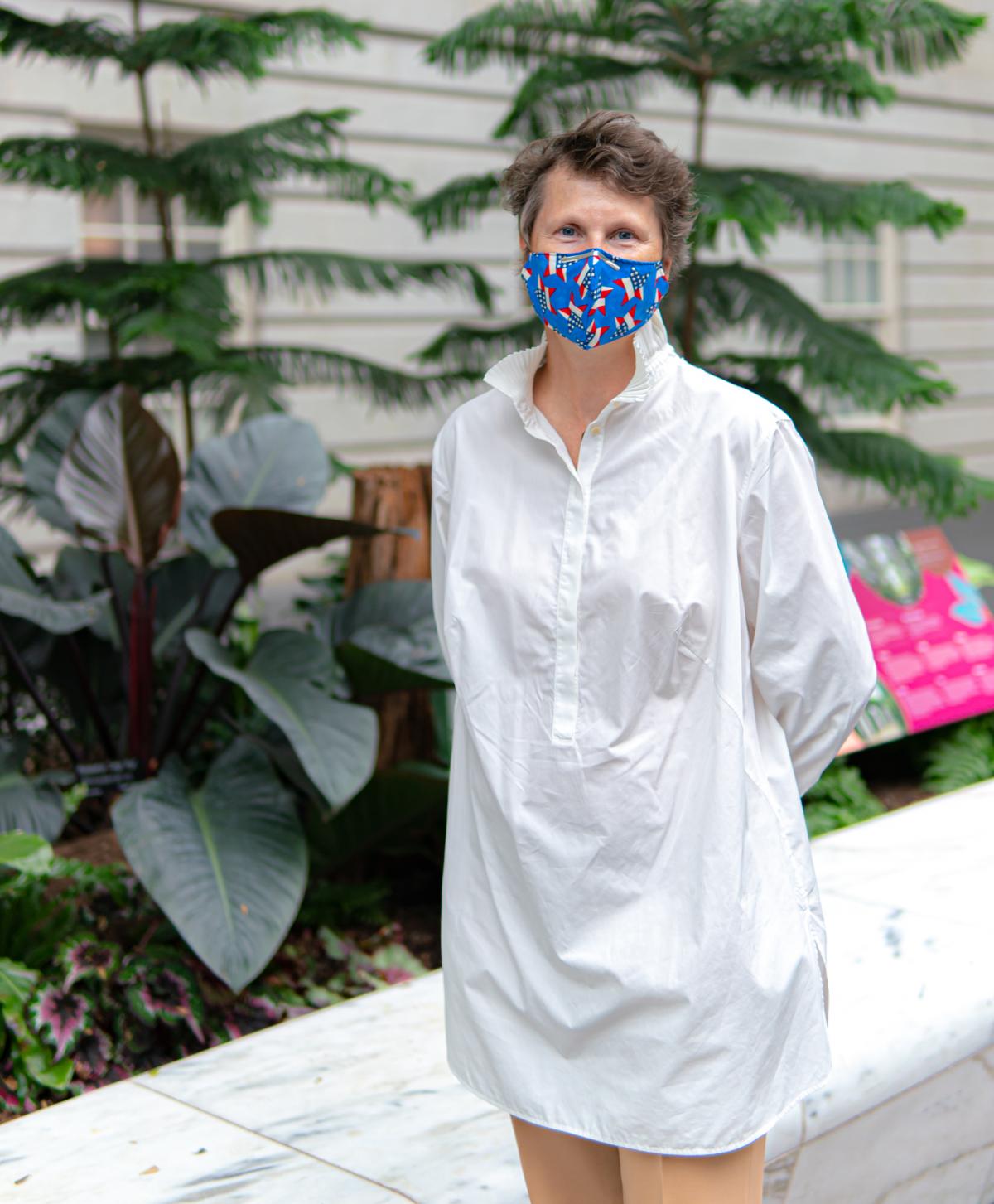
A crucial part of what I set out to do from my first day as director of the Smithsonian American Art Museum and its Renwick Gallery is to increase the representation of a variety of voices in our collections, galleries, and programming to reflect the complexity of the world in which we live today. Artists tell often complicated stories around identity that may be difficult to discuss, but I find these conversations to be the most transformative. Artists reframe established ideas of history, race, gender, and culture to help us to better see the world around us, and in turn, ourselves.
SAAM’s Clarice Smith Distinguished Lectures in American Art series gives us the opportunity to not only visit with great works of art, but also to learn more from the artists themselves, as well as prominent critics and scholars. Here too, the museum is welcoming different voices to the conversation about American art. Artist Fred Wilson inaugurated the 2021 series in September. His compelling and thought-provoking installations and sculptures, such as I Saw Othello’s Visage in His Mind, a haunting black mirror work in SAAM’s collection, question assumptions of history and race. Dr. Nada Shabout spoke about the lack of Arab and Arab-American artists in contemporary dialogues this month, and to close the series we will hear from Dr. Richard Powell about an often-overlooked period in painter William H. Johnson’s life.
In honor of Hispanic Heritage Month and the upcoming Día de los Muertos, we recently collaborated with the team at Google Arts & Culture to create a feature story that highlights SAAM’s extensive collection of Chicanx prints from our recent exhibition, Printing the Revolution: The Rise and Impact of Chicano Graphics, 1965 to Now. These innovative and vibrant prints are grounded in issues of social justice, politics, and identity and point to the rich legacy as well as the future of this printmaking tradition. We are excited to share broadly the groundbreaking work that challenges the historical sidelining of Chicanx artists in the history of graphic arts.
We recently announced that the museum purchased the extraordinary L.J. West Collection of early American photography from the 1840s to about 1925. Among the compelling images are works created by three early African American photography studios. These photographs show an element of American history (and art history) that is less known yet underlines the importance of museums focusing on the deepest and widest ways of representing America and its people.
This fall we present our two new special exhibitions, Sargent, Whistler, and Venetian Glass: American Artists and the Magic of Murano on view in our main building and New Glass Now at the Renwick Gallery. I also am delighted with the new ways we are sharing stories about American art online. The latest in our video series American Art Moments features Saisha Grayson, curator of time-based media at SAAM, explaining the intricacies of Nam June Paik’s installation, Electronic Superhighway, Continental U.S., Alaska, Hawaii, and his premonition of the country connected not just by a new highway system, but a network of electronic circuits. This short video is now one of my favorites!
Our recently launched comics series Drawn to Art: Ten Tales of Inspiring Women Artists is a digital project that highlights ten women artists represented in SAAM’s collection. In honor of the recent citywide celebration of Alma Thomas in DC, I’d like to highlight the wonderful story about Alma Thomas’s life and work that was inspired by her colorful, patterned abstractions. We are lucky to have the largest public collection of the artist’s remarkable paintings. Our hope is that this project will introduce a new generation to her artworks.
I’ll leave you with some inspiring words from Alma Thomas: “A world without color would seem dead. Color is life.” Indeed.
Be safe and be well. We are in this together,
Stephanie Stebich
The Margaret and Terry Stent Director



















